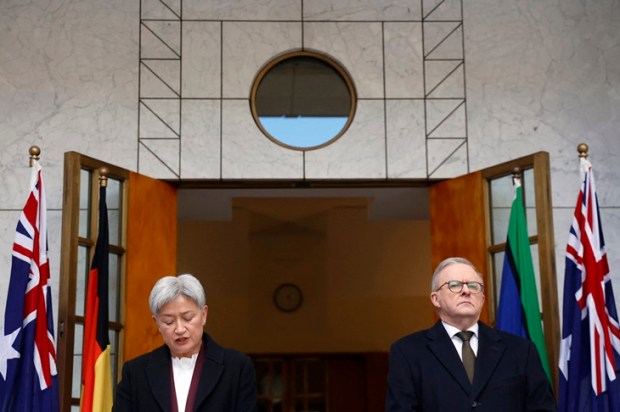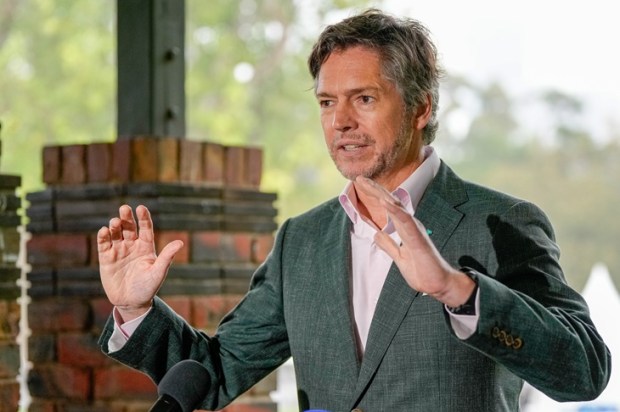Why is everyone arguing about the validity of Roman gold found by a peasant in Transylvania? More to the point, why are they doing it more than a year after a technological ‘revelation’ brought it to the top of the news cycle?
My first instinct is boredom, but it could also be the same reason why people can’t help sleuthing cold cases. People love making discoveries. Uncovering hidden truths. Touching the edges of historic conspiracies… It’s fun and provides a much-needed break from a truly depressing media age.
In that spirit, do we have a new Roman ‘emperor’ or are we being taken for a ride by a long-dead forger?
We’ve all heard the phrase, ‘cash is king’ but cash is also a vital part of the historical record. Chunks of metal – lost, buried, and hoarded – survive into modern times. Almost every ancient culture used precious metal to trade, and their commerce litters the dirt and sea. My personal favourite is the Sedgeford hoard found inside a cow bone.
Coins are breadcrumbs of history, but they don’t tell us the shape of the loaf.
While Bob Katter tries his best to erase King Charles III from Australian coins – and Labor plots to ditch physical money entirely – ancient coins almost always bore the image and name of kings and emperors. (Good luck to future generations trying to piece together our political history!) This was done to establish power and, in the days before social media, remind the peasants who was in control.
A 2,000-year-old coin found in a field in Hampshire with a metal detector recently resurrected the name of an unknown Iron Age ruler: Esunertos aka Mighty as the God Esos. He was one of the lucky ones, slipping straight into the pages of history to the sound of applause.
It is not always so easy.
Coins relating to Emperor Domitianus II found at Les Cléons were initially dismissed as forgeries due to a lack of corresponding evidence. That was a mistake. An amateur wielding a metal detector (I am sensing a pattern) discovered a pile of ancient coins inside a pot that had corroded together into a giant metal mess. After separating them, they found Domitianus II. The in-situ evidence was irrefutable.
Domitianus II was not a complete nobody, but the records left out the bit about him being emperor. Some are even so unkind as to call him a ‘usurper’. Whichever it was, he managed to mint himself some coins.
The interesting takeaway from his story is that the coins contained non-standard features and odd discrepancies which originally created the suspicion that they were forgeries. Other reasons had to be found for those discrepancies once their authenticity was placed beyond dispute.
This brings us to Sponsianus – the dubious figure whose head was found on a few coins, most of which were either lost or stored as fakes. There is no record of Sponsianus in history. If he existed, he is presumed to have ruled Dacia (near Transylvania) during the Crisis of the Third Century – a period of nearly 50 years starting in 235 AD when the Roman Empire almost collapsed. Even if his reign was during an earlier period – the empire was already in a crisis.
In a parallel to modern times, mass migration from cultures hostile to the Roman philosophy triggered widespread instability. This coincided with rebellion, droughts, famine, trade disruption, civil war, plagues, economic ruin, and foreign battles where the Romans were the defenders. Power vacuums formed which were naturally filled by military commanders resulting in 26 claims to the position of emperor. There are an untold number of local ‘heroes’ and military figures whose names we will never know.
Wikipedia still refers to Sponsianus as a ‘may’ rather than an ‘is’ on account of the only evidence of his rule being coins discovered in 1713 in the heavily militarised province of Dacia. Even though there are many headlines proclaiming Sponsianus as real, a closer look leaves plenty of room for lounge-chair sceptics.
Details of the supposed discovery of the Sponsian coins and related pieces come from a handwritten note by Carl Gustav Heraeus (1671–1725), Inspector of Medals for the Imperial Collection in Vienna. In March 1713, he documented the acquisition of eight gold coins of five different design types, only one of which features Sponsian, that were allegedly found in Transylvania and acquired from ‘Hof-Cammer-Rath Palm’ [3]. We identify this person as the senior Habsburg finance minister (Hof-Cammer-Rath = Court Chamber Advisor) Johann David von Palm (1657–1721) whose responsibilities included banking, mines and precious metals [4]. This is interesting in itself because it implies the alleged find was processed through official channels. As many as 15 other coins similar to those described by Heraeus are known from other collections, appearing in the published record from 1730 onward (previously reviewed in [3, 5]), hence it seems likely that Heraeus selected a representative sample from a larger group (which we call the ‘wider assemblage’) which was dispersed on the market at the time.
Four coins now in The Hunterian in Glasgow were identified as part of the wider assemblage in 1997 [6] and form the basis of this study. These had been part of an extensive collection of ancient coins acquired in 1782 by William Hunter (1718–1783) from the estate of noted Viennese antiquarian Joseph De France (1691–1761) [7]. De France may have purchased the four coins of interest in 1713 or acquired them from a third party. Here we report a series of non-destructive micro-analytical investigations of these coins and two undoubtedly genuine Roman gold coins for comparison. Before reporting the results, we review the coins of the wider assemblage, their known provenances, and the puzzling features that have led specialists down to the present day to question their authenticity.
Contained within the hoard were other coins belonging to emperors Gordian III and Philip the Arab from similar time periods. These are questioned as being unusual, but not necessarily fake.
Written off as ‘barbaric and strange’ and ‘ridiculously imagined’, Henri Cohen cruelly said of the Sponsianus coins in 1868:
‘Je regarde ces pièces comme des coins modernes ridiculement imaginés et très-mal faits…’ (I regard these items as modern coins, laughably conceived, and very poorly executed.) – Henry Cohen
Cohen was not convinced that poor execution could have been typical of coinage produced by usurpers and short-lived emperors vying for power in smaller regions. Although to be fair to Cohen, the weight of the coins being wrong is a worrying detail.
At least, at first.
Digging a little deeper into the history of the time, the strange composition, minting practice, and weight of the coins could have a reasonable explanation. The research team posited:
Most significantly, there was an abundant supply of precious metals from the many mines operating in Dacia. Archaeology shows that the gold ore was processed on site [77]. In normal times ingots would have been shipped to Rome with coinage coming back to pay for the operation and the large military presence. This, however, required secure supply lines, whereas archaeological data from coin finds across Dacia indicates that the external money supply terminated around the year 260 [78, 79]. An obvious expedient would have been to use the metal from the mines to pay the troops until order was restored. The only official mint in Dacia, which had previously manufactured large quantities of bronze coins for the local economy, had been shut down in the mid-250s as the crisis developed [79]. There was, however, an artisan jewellery industry at Apulum working in gold using clay moulds [80], so we suggest that the person who manufactured the coins was co-opted from there, using the technique familiar to them.
This also helps explain the relatively high silver content of the coins. Romania’s Apuseni Mountains contain Europe’s largest gold field, but the ore there is also notably rich in silver [77]. The local cupellation process, which separated the precious metals, may have had practical limits of purity below that achievable by the industrial smelters of Rome. The level of silver and copper in the metal, and the range of variation, is very similar to that measured in first century Dacian-era gold objects made in the same area [81]. Silver would have been separated from the ore in significantly larger amounts than gold, hence reports of possible silver coins in the Sponsian series (Types 6 and 7) [8–10] suggest that it was turned to coin also, although no such pieces apparently became a part of the hoard discovered in 1713. We note that the large Type 7 coin featuring Gordian III, now lost, was described as being of pure silver [8], which is quite unlike the regular debased coins of the period, but would fit with the idea that it was intended as bullion.
Taken in combination with the closure of the local mint and presumed hiring of craftsman proficient in casting instead of striking, a leader in a hurry with an army to pay might have produced a batch of these curious coins onsite.
The circumstance of their discovery is also not typical of the usual coin forgery scam. As the paper says:
In the most recent detailed discussion of the problems posed by the Sponsian assemblage, Bursche [5] suggested they were the work of a sophisticated fraudster operating in early eighteenth century Vienna who serially duped antiquarian collectors. By this hypothesis, the coins were consciously intended to appear ‘barbarous’ with illiterate scripts and enigmatic designs so as to confuse the experts. The centrepiece of the deception was the fabricated emperor Sponsian, who was presumably intended to appeal to the curiosity of potential collectors, attracting a rarity premium. The fakery–if that is what it was–must have required considerable investment of time and money: the weight of gold in the known assemblage exceeds $20,000 in modern value. This also seems to rule out an alternative possibility that the coins are some kind of flight of fancy on the part of some eccentric antiquarian of the past.
If they are forgeries, the choice of coin is very strange. Creating forgeries is an expensive business, particularly in the era these were discovered. There was next-to-no market for the particular period these coins belong to and, aside from some targeted scams, an unknown emperor was effectively worthless. In other words, if they are forgeries, they are a waste of time.
An interesting point arose in 1726 – crucially after the coins were found – when the record of a Nicodemus Sponsianus was discovered. No, he is not an emperor, but before then the name ‘Sponsianus’ was very nearly unheard of meaning the forger would have had to correctly guess an unknown Roman name. That stretches the limits of belief. The argument against this is the most unconvincing – that the forger made up a name and it was correct. A better argument is that it is a Latinised version of a local name the forger would have heard but it is still a poor motivation for a forger if true.
Let us return to location of the coins.
Dacia was a short-lived Roman outpost at the edge of the world, subjected to constant attack and frequently cut off from the protection of the empire. This includes being cut off from the mint. Whether Sponsianus was a local general using the title of ‘emperor’ to keep the peace or a would-be usurper, we do not know. No doubt, if one were to go digging, more information would be found. If he is real, more evidence of his existence will be found. If another pile of coins pop up, his place will be cemented in history. To that end, further research is being done on the old gold mines and the composition of the coins to see if they were minted from local stock. If so, it would heavily indicate authenticity.
We can thank Professor at the University College London Paul Pearson for re-instating Sponsianus to the discussion. He was the one who noticed distinctive scratches on the coins which are typical of coins of that age being in circulation and authored the study we have been quoting along with Michela Botticelli, Jesper Ericsson, Jacek Olender, and Liene Spruženiece.
Their extraordinary work noted that the wear and tear found on the coins is difficult to replicate, particularly when placed under a microscope. Pearson’s book, Roman Empire in Crisis, provides interesting guesses for those who want to play detective and piece together the lost corners of the Roman Empire.
Further analysis of the surviving coins kept in the Hunterian Museum in Glasgow, including a chemical examination of the scratches, has both frustrated and enticed people to discuss the idea.
Who knows what kind of quirk of circumstance led to their creation. It’s probably a good story.

























